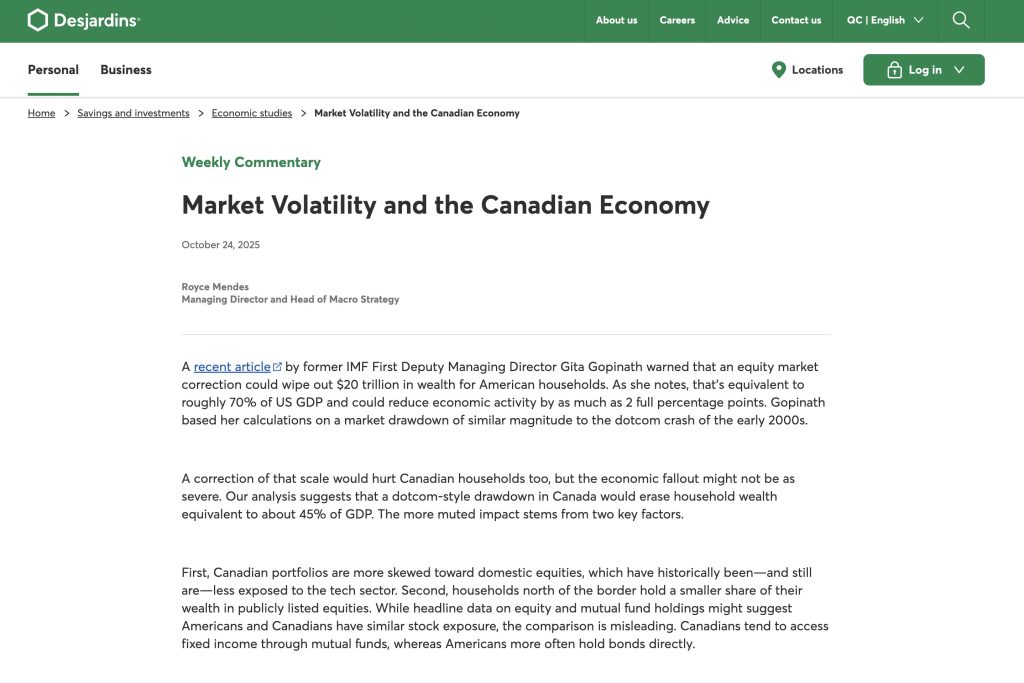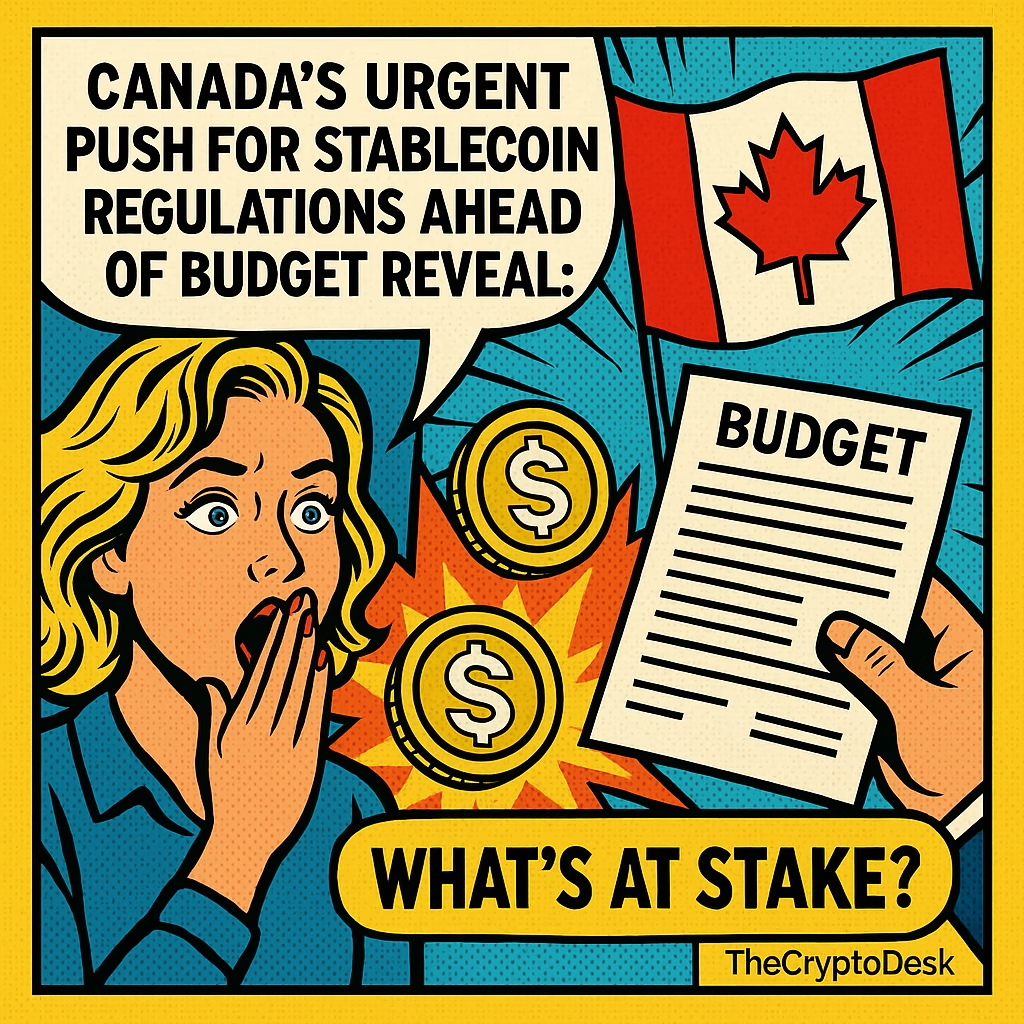As Canada approaches its pivotal federal budget announcement on November 4, 2025, the nation is gearing up to unveil much-anticipated regulations surrounding stablecoins. With the rapid adoption of U.S. dollar-backed tokens becoming a pressing issue, Canadian legislators are racing against time to ensure they don’t fall behind their American counterparts and sacrifice financial sovereignty in the process. This moment is crucial not just for the economy, but for maintaining Canada’s standing in the global digital financial arena.
In recent weeks, government officials have immersed themselves in discussions behind closed doors, consulting with both industry stakeholders and regulatory bodies to sculpt a regulatory framework that addresses the complexities of stablecoins. These discussions are gaining urgency as policymakers recognize the risks associated with delayed action—risks that could see capital shift to jurisdictions with more favorable regulations.
According to Bloomberg, Canada is accelerating the development of its stablecoin regulatory framework, with details expected to be officially announced in the federal budget to be presented by Finance Minister François‑Philippe Champagne on November 4. Government officials…— Wu Blockchain (@WuBlockchain) October 27, 2025
Proposed regulations are expected to be woven directly into the federal budget presented by Finance Minister François-Philippe Champagne. Insiders have reported that these rules will critically tackle the oversight of stablecoins, thereby addressing growing concerns about Canada lagging behind other major economies, particularly the U.S., in establishing a clear regulatory environment for this burgeoning sector.
Stablecoins, efficiently pegged to traditional currencies like the U.S. dollar, are reshaping the digital payment landscape. Companies such as Tether and Circle issue these cryptocurrencies, which are typically backed by stable assets such as U.S. Treasury bills to maintain their value. The recent passage of the U.S. GENIUS Act exemplifies a proactive approach, offering regulators authority to supervise stablecoin issuers, enforce reserve standards, and implement anti-money laundering provisions, effectively providing a defined framework embraced by the industry.
In stark contrast, Canada has yet to formulate dedicated legislation. While regulators suggest that stablecoins might fall under existing securities or derivatives laws, industry experts strongly advocate for their classification as payment instruments. John Ruffolo, Vice Chair of the Council of Canadian Innovators, has been vocal about Ottawa’s need for immediate action, stressing that failure to act could drive investment south of the border. Without clear regulations, Canadian businesses and investors may increasingly convert to U.S. stablecoins for international transactions, inadvertently benefiting American financial institutions while drawing Canadian liquidity away from the country.
Data recently released by Desjardins reveals a compelling point: about 99% of global stablecoin value is tied to the U.S. dollar. Mirza Shaheryar Baig, a foreign exchange strategist, echoed concerns that the embrace of U.S. dollar stablecoins in Canada could undermine the nation’s monetary sovereignty and diminish the Bank of Canada’s control over its money supply.
 Source: Bank of Canada
Source: Bank of Canada
Ron Morrow, the Bank of Canada’s Executive Director of Payments, Supervision, and Oversight, highlighted the urgency of introducing federal stablecoin regulations comparable to those enacted by other nations. Morrow stressed that for stablecoins to operate effectively as a form of currency, they must be “as safe and stable as the balance in your bank account.” This reflects a growing consensus that consistent national rules are essential for fostering confidence in the digital currency landscape.
Moreover, the economic implications of lagging legislation are becoming evident. A recent report from Desjardins indicated that Canada risks losing ground to the U.S. and Europe, whose stablecoin frameworks are already in place. This is evident in actions such as Shopify’s recent decision to accept USDC, a dollar-pegged stablecoin, which speaks to the appeal of U.S. digital payment systems over limited domestic options.
 Source: Desjardins
Source: Desjardins
While a handful of Canadian projects, such as QCAD and CADC, have made strides in creating Canadian dollar-backed stablecoins, their uptake has been sluggish due to regulatory ambiguities. Tetra Trust, a regulated custodian partnered with National Bank and Shopify, plans to launch its own CAD-backed stablecoin in 2026. However, industry experts agree that real progress hinges on the establishment of clear federal regulations.
Interestingly, Canada’s crypto adoption rate, though moderate, reflects a dynamic landscape. According to the Bank of Canada’s latest “Methods-of-Payment” report, only around 3% of Canadians utilized Bitcoin for transactions in 2023, with cash comprising 20% of purchases. Nevertheless, e-transfers take the crown as the most favored payment option, with nearly 60% of respondents opting for this method.
 Source: Bank of Canada
Source: Bank of Canada
Despite these numbers, Canada is establishing itself as an important hub for cryptocurrency infrastructure, boasting over 3,000 Bitcoin ATMs— the second-largest network globally. Interest from institutional investors is also on the rise, with a KPMG survey revealing that 39% of Canadian institutional investors had some exposure to crypto, an increase from 31% in 2021. Many in the industry believe that regulatory clarity is vital for sustaining this upward momentum. Coinbase, a leading global exchange, has cautioned that without comprehensive reforms, Canada risks losing its competitive edge in the digital asset landscape.
📉 @coinbase warns Canada risks losing its global economic edge without crypto reforms, urging innovation-friendly regulations to harness the potential of digital assets and maintain competitiveness.#canada #crypto https://t.co/xy66i2EN0L— Cryptonews.com (@cryptonews) March 27, 2025
The fragmented regulatory environment in Canada complicates the creation of a coherent policy roadmap. Responsibilities are divided among various federal entities, including the Bank of Canada, the Office of the Superintendent of Financial Institutions (OSFI), and 13 provincial securities commissions, which hampers timely policymaking. Advocates are optimistic that the impending budget will bridge these gaps and present a unified regulatory framework for stablecoins, mirroring the structured approach taken in the U.S.
This issue carries significant political implications as well. With elections looming, the Liberal government is under pressure to showcase tangible progress in financial innovation. Prime Minister-designate Mark Carney, who previously served as the Bank of England and Bank of Canada governor, has had mixed views on cryptocurrencies. However, he acknowledges that central bank-issued digital currencies may represent the next evolutionary step in the realm of money, as discussed in his book, *Value(s)*.
In conclusion, as Canada prepares to unveil its regulatory stance on stablecoins, the anticipation surrounding this decision is palpable. The successful crafting of these regulations could not only bolster Canada’s position in the global financial landscape but also pave the way for a more secure and innovative payments system. As we await the federal budget, the hope is that it will address the intricacies of stablecoins and thus ensure that Canada remains competitive in the fast-evolving world of digital finance.
